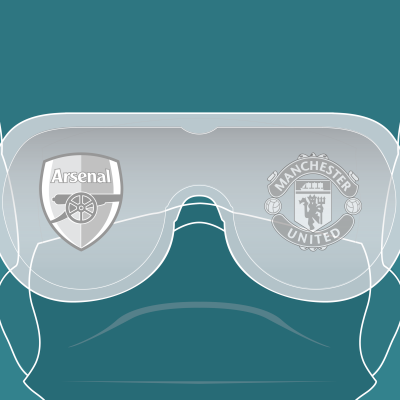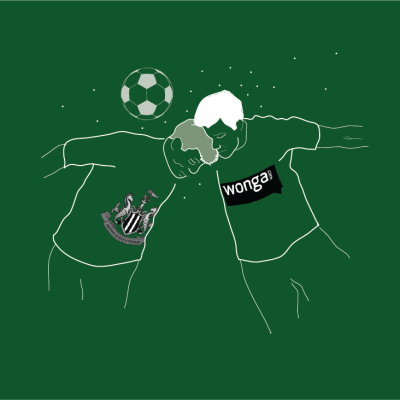This piece was first presented as an academic paper at the
9th EASA Biennial Conference: Bristol, UK. September 18th – 21st, 2006.
Introduction.
This paper focuses on observations that I made on July 7th 2005, or what is now known as 7/7. It will provide my ‘on the spot’ ethnographic account of my experience of being in a hotel in the Edgware Road on July 7th 2005 and how a sense of belonging grew out of being in a place which had been bombed. It also explores the role of organisational policy in relation to the concept of belonging.
Foucault’s notion of morality as a marker to what is sane and acceptable behaviour helps to deconstruct some of the observations and interactions I had on July the 7th 2005. He argues that in the mid 18th Century madness was segregated based on moral and religious discourse. Religion became the core of reason, by being the ‘concrete form’ of what was not mad. The mad person was controlled by being placed in a ‘moral element’ where they “must feel morally responsible for everything within him that may disturb morality and society and must hold no one but himself responsible for the punishment he receives” (1989: 234). For Foucault, the need to control madness was more important than curing it.
I want to illustrate, through an ethnographic account, that using the concept of madness symbolically helps us understand coping mechanisms that were present in Central London on July 7th 2005. Simply put, interpretations of everyday normality switched to become interpretations of ‘madness’ that were deemed immoral.
Observation 1 – Bombing and belonging
On the 7th of July 2005 I was attending a Department of Health launch of a report called ‘Delivering Race Equality in Mental Health Services’ which was being held at the Edgware Rd Hilton Hotel. I was looking forward to it because the debates around why there are such high rates of Black mental health service users has been going on for almost fifty years.
I caught a tube from Brixton in the morning and changed at Victoria station to catch another tube on the District and Circle Line to Edgware Road. This train seemed to take a long time because it stopped in-between stations and then waited for prolonged periods at each platform. However, I was engrossed in an article in the free newspaper about London’s success in winning the Olympics the previous day. The driver of the tube attempted to calm passengers’ frustration with the journey going nowhere very slowly. He apologised a number of times in a sprightly tone, which was received by those in the carriage, including me, with tuts, moans and the odd “for fuck’s sake”. Soon the driver’s apologies turned to providing us with the explanation that there had been a ‘power surge’ on the underground somewhere in East London. The tuts and moans of frustration halted to be replaced temporarily by looks of confusion on passengers’ faces that seemed to convey the question: “Uhhh, what’s a power surge”? However, we all quickly accepted that power surges were a possibility and a totally rational explanation to why the journey was taking so long. This meant that we could quickly return to our tuts, moans and abuse of London Underground.
At Paddington tube station, which is one stop away from Edgware Road, the train sat at the platform for a few minutes. The driver, in a less sprightly tone, suggested that we all got off the train and continued our journeys on foot. Of course, this was met with further abuse, but the fact was that ‘we’, the passengers, had been defeated by the unpredictable power surge. I got to the entrance of Paddington tube station and asked a London Underground assistant for directions to the Edgware Road Hilton. He gave me some simple directions and told me the walk would only take 3-4 minutes. As I started my walk, I noticed that there was a mass of police cars and vans driving, with sirens on, in the same direction as I was walking. From a distance I could see that at the entrance of Edgware Road tube station police were cordoning off the area in a rather hurried way. My immediate thoughts were: “Jesus, what a power surge”. Although I was no nearer actually understanding what one was.
The Hilton was opposite the Edgware Road Station and when I arrived at the hall where the launch of the report was being held, delegates were already discussing the power surge. I registered and got my nametag. Then, I quickly focused on the coffee and mountain of mini pastries. I was told the power surge had delayed the start of the conference, but after 30 minutes I realised that the table, with roughly 300 nametags on it, was still pretty full and the mini pastries were still in abundance, regardless of my attempts to consume them. It was at this stage that the word ‘terrorism’ was first used as a possible reason behind the upheaval. The NHS managers I was chatting to seemed to be divided. Half thought that this was a terrorist act in reaction to the success of the Olympic bid while others were steadfast in the power surge theory. Still, the nametags were showing no signs of being collected.
The launch got under way an hour or so later than planned and lasted only until the first coffee break when it was confirmed that ‘bombs’, and not a power surge, were the cause of the upheaval. Furthermore, we were told that we had to remain in the hall because the reception area of the hotel was being used as an accident and emergency station. We were also told that two telephones had been set up so we could ring family and friends to tell them that we were ok and that lunch would be brought to the hall earlier than advertised.
The mood changed quickly from delegates discussing possible theories behind the bombings to that of a forum of global communication. People started to receive calls on mobile phones from friends and family from around the World. I personally received a couple of calls from my uncle and cousins in Botswana describing the images they were watching live on TV of the hotel we were in. Yet we were in an information vacuum and reliant on outside global contact through mobile phones. It began to feel exciting because we were on the front-line. Those who were ringing us were also telling their friends that they knew friends in the hotel: I had become news!
A few hours later we were allowed to leave and a group of about ten delegates, including myself, decided to walk from Edgware Road to South London, over Vauxhall Bridge and then on to Brixton. This walk would take roughly three hours.
It was on this walk that I realised that everyday behaviour had ceased and that any sign of normality was perceived as an act of madness and betrayal. Let me develop this by describing the walk. Firstly, the bombs had meant that transport had come to a standstill. This forced people to break out of their everyday routines and gather as one large swarm of bodies walking home. It resembled a large and endless stream of people going to a football stadium to watch a game. As at a football match, there was also a sense of tribalism where, without clear orders or leadership, we fitted into similar physical and emotional rhythms. This feeling was also manifested by ‘us’ all being affected by the bombs and therefore, by the ‘war on terror’. The fact that we were walking as a direct consequence of the bombings was enough to create a sense of belonging, in other words, the bombing allowed us to belong.
Our immediate enemies were not the bombers but those individuals who were carrying out normal activities. At a French restaurant two businessmen were eating al fresco with a bottle of white wine. We watched from across the road and made some joking comment about the need for a drink. Then, a woman approached the two men and hurled abuse at them for being insensitive. They were not part of the tribe and instead had become a form of pollution to the perceived purity of the moment. Normality had become an act of madness and irrationality that was effectively non-conformity.
The walk took us into Hyde Park; there we were met with another act of normality. A jogger was exercising in the park. He had on running shorts and a vest, headband and earphones. One person in my group commented; “What a fucking nutter”. All of a sudden, keeping fit was seen as an act of madness. In a similar way to the two businessmen eating al fresco, the jogger was seen as having broken away from the moral order of the mass. Normality was now insensitive.
The short description illustrates how discourses of morality are quickly formed so to create a common connectedness and sense of belonging on a very rudimentary level. Continuing to engage in everyday practice threatens this conformity so much that it is quickly and largely unconsciously deemed as an act of madness.
Belonging as an organisation
I have focused on how individuals responded to the bombings. However, as the months went by I noticed that this sense of belonging was also present on an organisational level.
The NHS event rescheduled the launch of the report on mental health and race five months from the 7th of July 2005, at the same hotel and on the 7th day of the month. The conference was now called One London One World – BME (Black and Minority Ethnic Groups) Conference. The conference organisers explained to delegates that there was a special quiet room that was next to the conference hall if anyone felt that the conference stirred emotions in them relating to July the 7th. Some delegates began to laugh when they heard this, while others shook their heads and had the same puzzled look on their faces as I did, a few months earlier, when I was on the tube trying to work out what a power surge actually was.
The change of the name of the conference represented a ‘collective London’ and the designated room where delegates could go and reflect could be interpreted as a mechanism to forge an imagined identity where everyone understood the codes of belonging. However, it was now the turn of the organization to be deemed ‘mad’ by those in the conference hall because it was perceived to have misjudged the meaning behind belonging. An article published in The Guardian on July 7th2006 Jonathan Freedland captures the short lived feeling of belonging well by illustrating how the naming the day, 7/7, was a misjudgment in its own right because it falsely tried to mirror itself with 9/11. Where 9/11 allowed for a collective emotion of revenge, 7/7 did little to muster up feelings of being pro-war. Freedland explains that for a few weeks after the bombings in 7/7 there was an increase of 4000 push bike journeys to work. This lasted exactly 2 weeks before people started using the tube and buses again. Belonging was a short-lived experience where, over a few weeks, society demanded that people returned to normality.
However, on an organizational level, the need to remain attached to a sense of belonging was rekindled by the NHS. They published a pamphlet called: Affected by the London Bombings? How to get free NHS help. In the pamphlet it suggests that the “bombings on 7 July 2005 had a profound effect on many people, particularly those living and working in the London area. While some people have now recovered, many people have not yet come forward for help”. It then goes on to explain that: “Many people may suffer from Post Traumatic Stress Disorder (PTSD), which is a common reaction to a traumatic event such as a terror attack”. Furthermore, it states that “if you or your children are experiencing any of the symptoms above or below, as a result of the London bombings, it may be helpful to seek professional assistance.
- Sleep problems
- Fear and anxiety
- Tearfulness and sadness
- Helplessness
- Anger and irritability
- Guilt
- Concentration and memory problems
- Headaches and bodily pain
- Avoiding things that remind you of the bombings
- Feeling numb or dreamlike
- Avoiding talking about the event or needing to talk about it all the time
- Unpleasant thoughts and images
It finally, tells you how to get advice.
I don’t want to belittle the fact that many people were and are heavily affected by the bombings and might well need help and support. However, what is interesting for this paper is to show how the discourse of madness has moved from being symbolic and based on a pseudo-tribal morality to becoming a policy driven pathology or a biomedical symptom of mental illness. The pamphlet also relies on generating a feeling of moral guidance by using a similar language of engagement as pharmaceutical companies use in their television advertisements on ant




